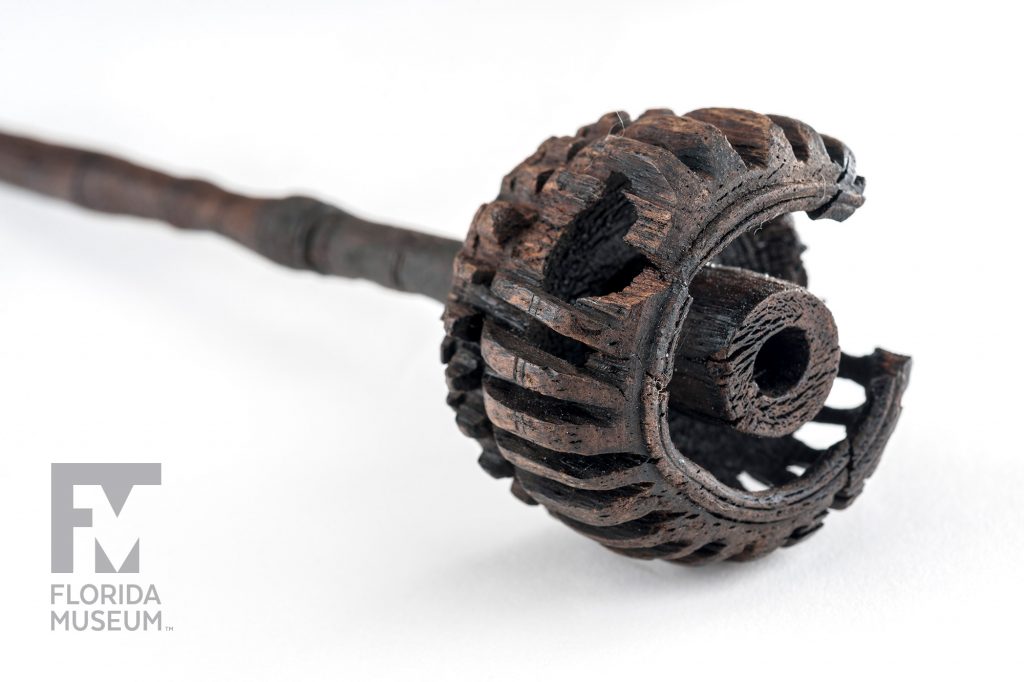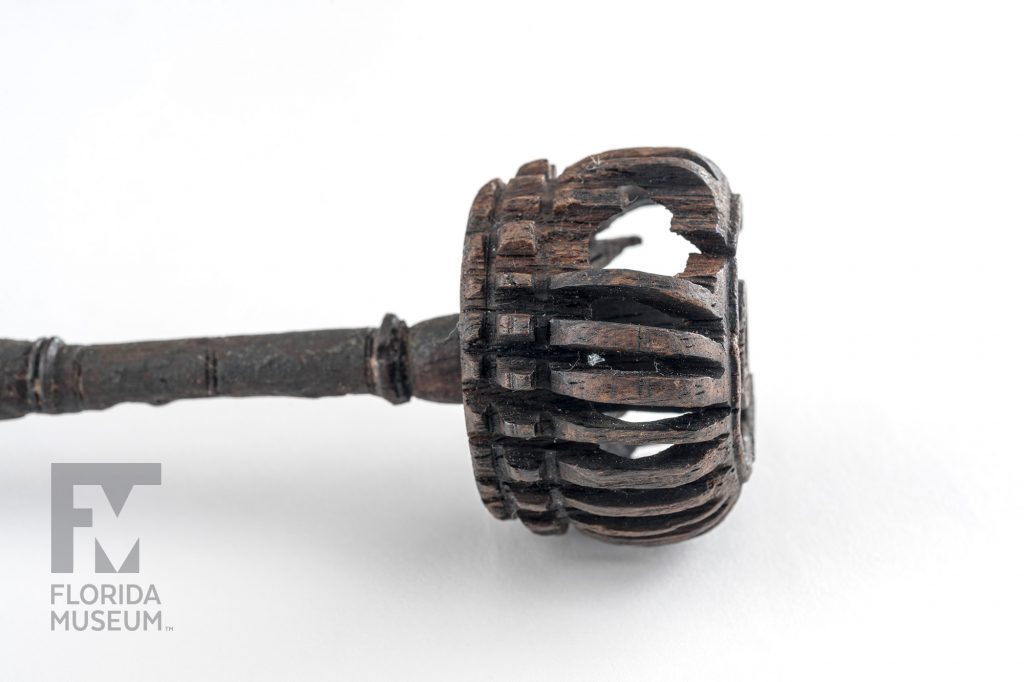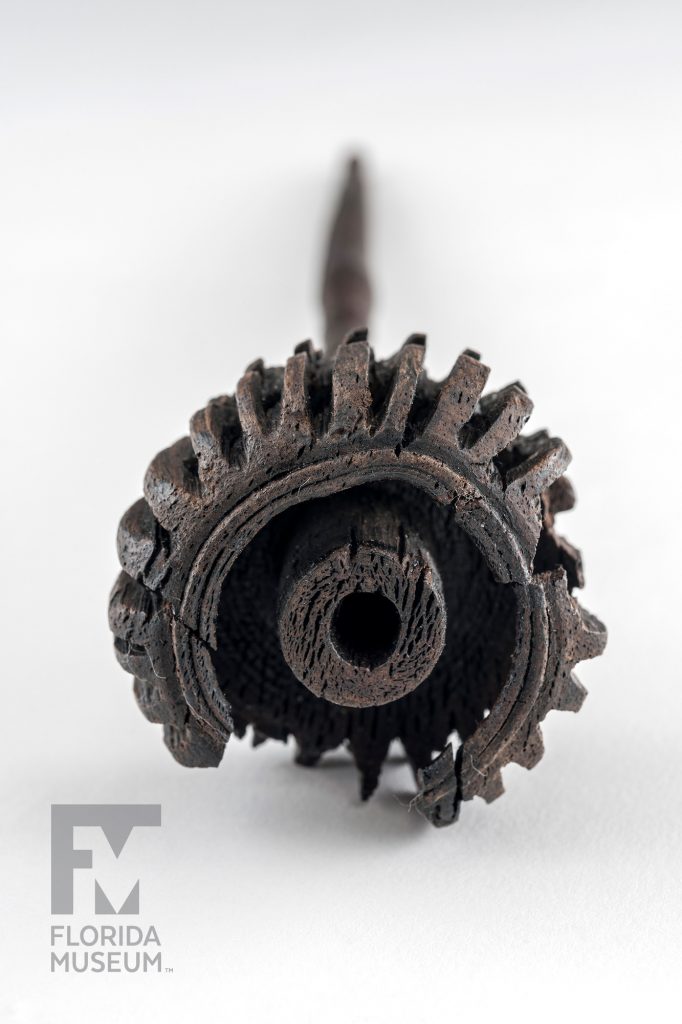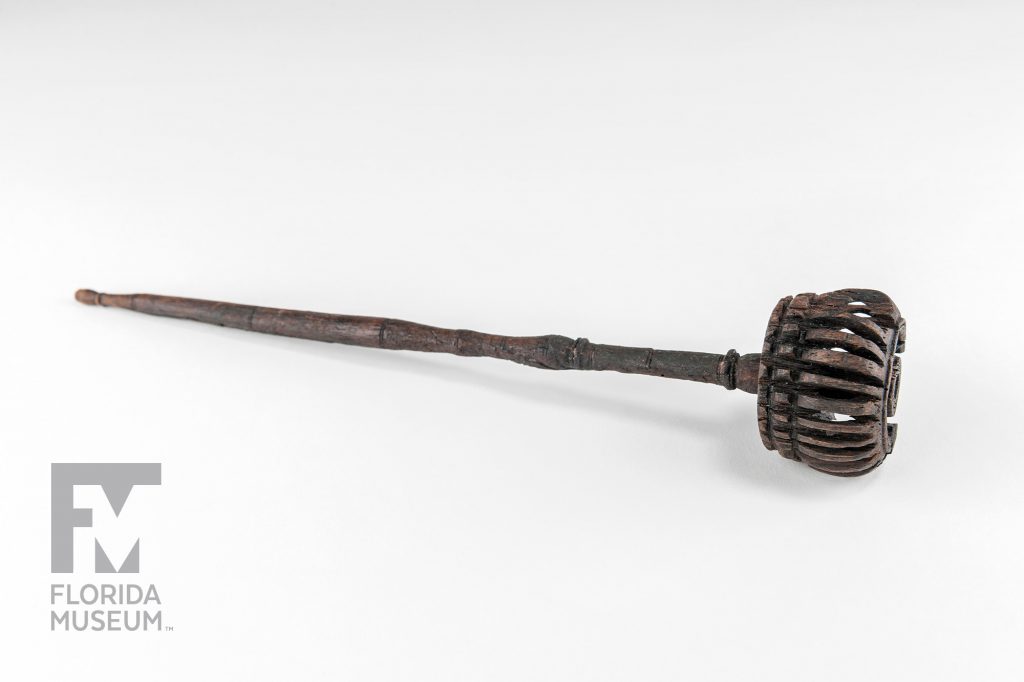Spaniards eagerly adopted chocolate in the Americas, using Mexican chocolateros to whisk and froth a beverage. Curator Kathy Deagan recovered millions of artifacts from Spanish Colonial archaeological sites, revealing much about cultural impacts and change.
Summary
Chocolatero (Chocolate Frother)
From St. Johns Co., Florida
Dates to 18th century
Collection
Story
Dr. Kathleen Deagan, distinguished research curator emerita of historical archaeology at the Florida Museum of Natural History, has been instrumental in investigating the impacts of colonialism and the resulting blending of cultures. Her research has truly been interdisciplinary, involving archaeology, history, zooarchaeology, archaeobotany, geology and other fields. Dr. Deagan’s decades of research in the Caribbean, in the southeastern U.S., particularly in St. Augustine, has allowed us to have a better understanding of the daily lives and activities of the Europeans, Native Americans and Africans impacted by colonialism. In St. Augustine, Dr. Deagan found that it was primarily women who were the brokers of cultural exchange.
This wooden chocolate frother is a perfect example of the blending of cultures during the Spanish colonial period. Chocolate was unknown to Europeans before their arrival in the Americas, but it was used by native populations in Central America. The Spanish eagerly adopted chocolate into their cuisine using Mexican chocolateros, or chocolate frothers, to whisk a chocolate beverage.
Gifford Waters
Collection Manager, Historical Archaeology*
Florida Museum of Natural History
Exhibit
On display Sept. 23, 2017-Jan. 7, 2018, Rare, Beautiful & Fascinating: 100 Years @FloridaMuseum celebrated the Museum’s rich history. Each Museum collection was asked to contribute its most interesting items and share the stories that make them special. Though the physical exhibit is closed, this companion website remains online, providing an opportunity to experience the Florida Museum’s most treasured specimens.
Exhibit Area: Faces of the Museum
Theme: Dedicated Employees
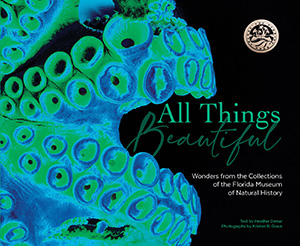 Want to see more? Explore more than 300 breathtaking color photos of plants, animals, fossils and cultural heritage materials from the Florida Museum of Natural History’s collections in the award-winning book All Things Beautiful available from the University Press of Florida.
Want to see more? Explore more than 300 breathtaking color photos of plants, animals, fossils and cultural heritage materials from the Florida Museum of Natural History’s collections in the award-winning book All Things Beautiful available from the University Press of Florida.
*This title was accurate at the time the exhibit was on display in 2017. Please visit the collection website to verify current staff and student information.
